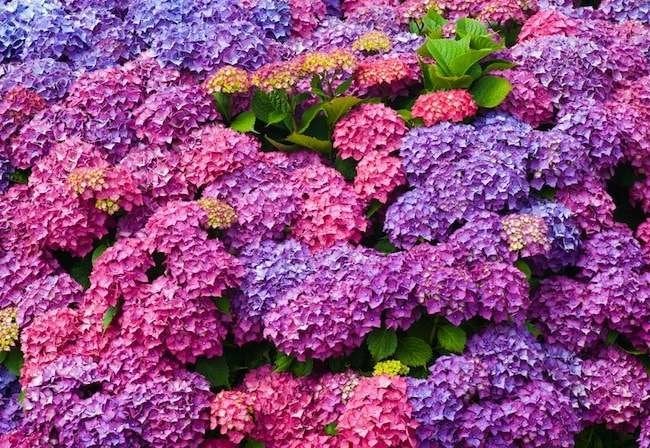

We may earn revenue from the products available on this page and participate in affiliate programs. Learn More ›
Home Advice You Can Trust
Tips, tricks & ideas for a better home and yard, delivered to your inbox daily.
Happiness From Hydrangeas
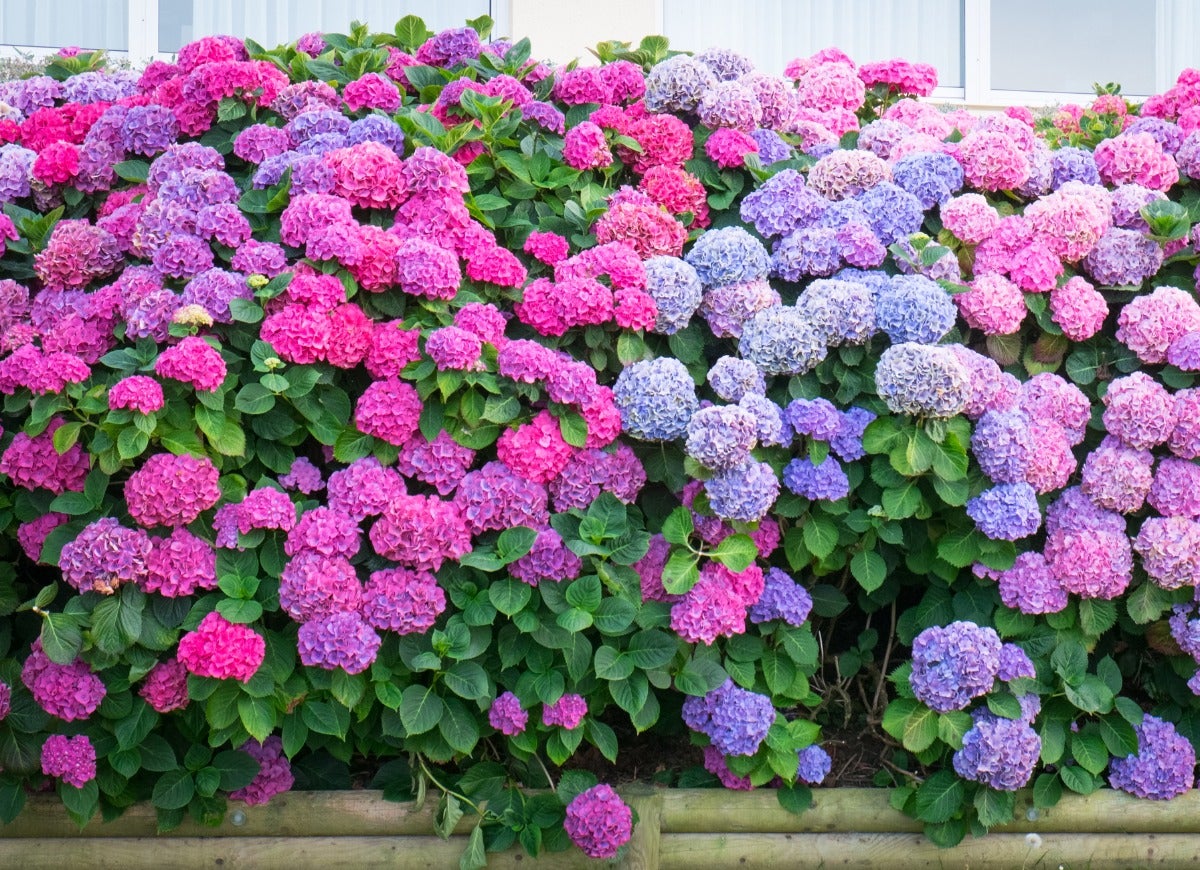
Hydrangeas are showstoppers in almost any garden, especially in colorful cottage Southern gardens. There are as many as 75 species and 600 named cultivars of the flower, but they’re generally split into six main types—bigleaf, smooth, panicle, oakleaf, climbing, and mountain—according to the size and shape of their leaves and blooms, the color of their flowers, their growth habits, and other factors.
Here, we’ve gathered 12 of our favorite stunning hydrangeas from among these types, and anyone who knows and loves this shrub can appreciate how difficult it was for us to choose only a dozen. We’ve also included sources where gardeners can buy these must-have dazzlers. Nurseries offer and ship hydrangeas only when the weather cooperates, so be patient if your selection is not yet available.
Everlasting Amethyst
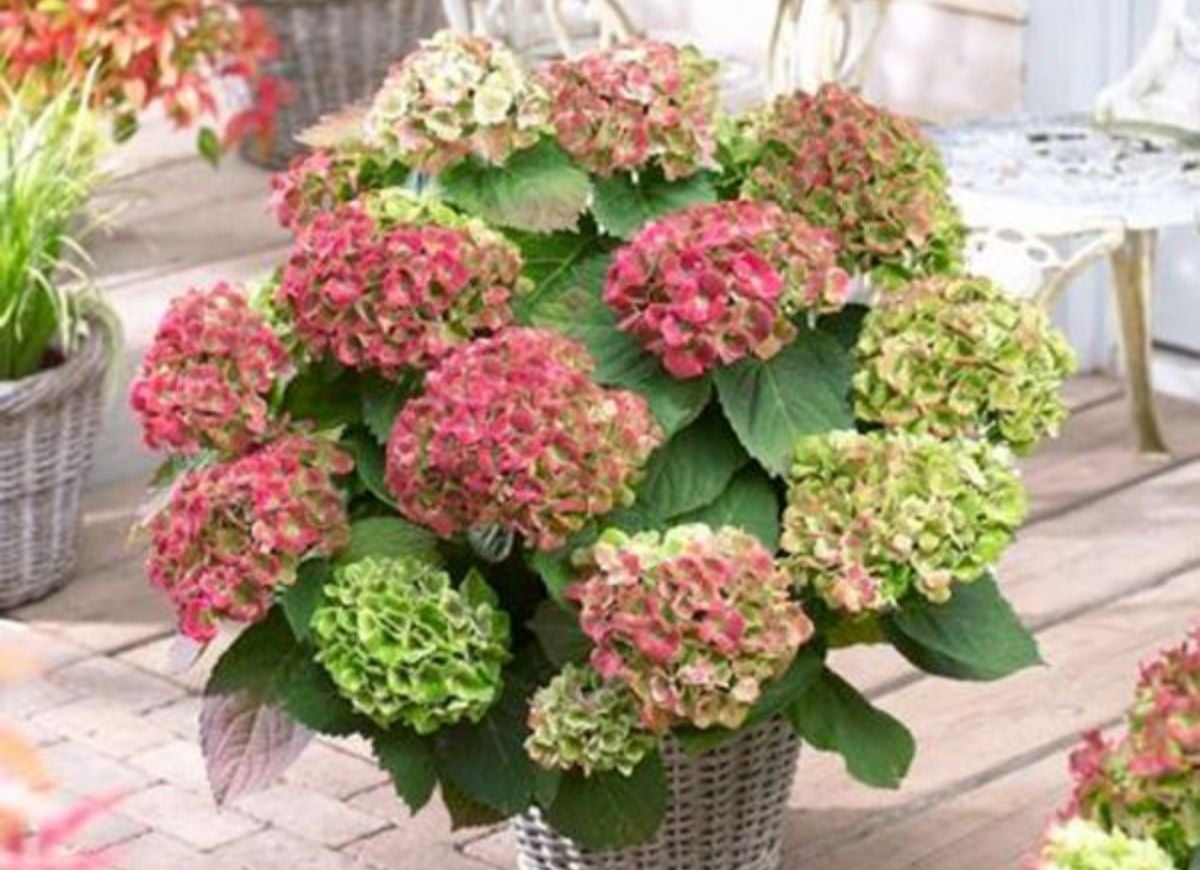
A Southern garden staple for its love of moisture and acidic soil, the typical hydrangea shrub (Hydrangea macrophylla) features big leaves and large puffball blooms. Check with your local garden center or master gardeners to see which varieties grow best in your area’s climate and soil.
Our picks start with Everlasting Amethyst, one of several bigleaf hydrangeas with bold blooms that change color during the season (flowering May through June). This one starts out fuchsia pink and ages to lime green. Available at
White Flower Farm
for $36.
Panicle Hydrangea
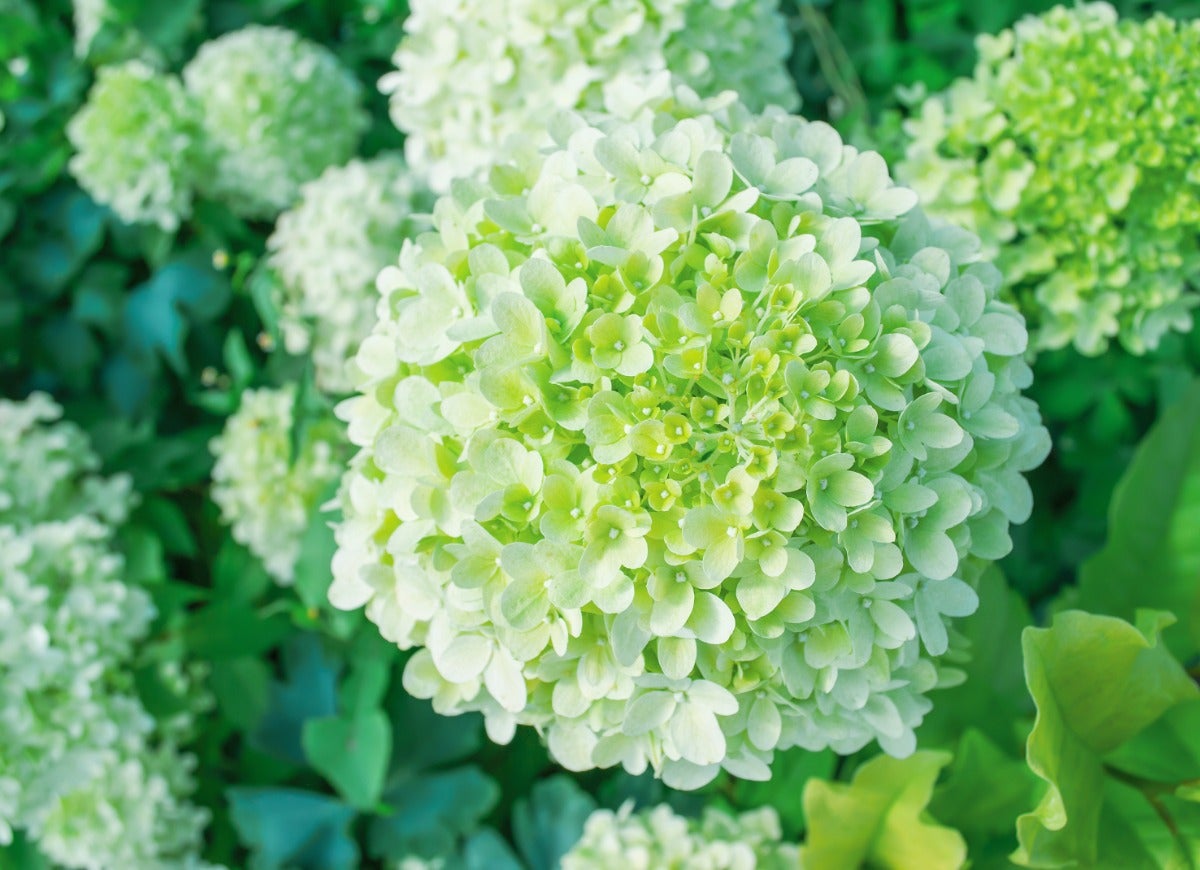
Native to Asia and perfect for the sunny garden, the panicle hydrangea, one of the six main types, features conical clusters of flowers. It offers a later bloom than most, flowering from late summer to early fall. There are many variations in color among H. paniculata varieties, which are known as the easiest hydrangeas to grow. That’s a great feature if this is your first attempt at growing these stunners.
The shapely and prune-friendly shrub boasts nearly football-size flowers. It also adapts better than some hydrangeas to colder climates. A number of panicle hydrangeas, including ‘Limelight,’ thrive in cold, faring well in the short seasons of Zone 3 as well as more temperate Zone 8. Available at
Nature Hills Nursery
for $30.99.
Mophead Hydrangea
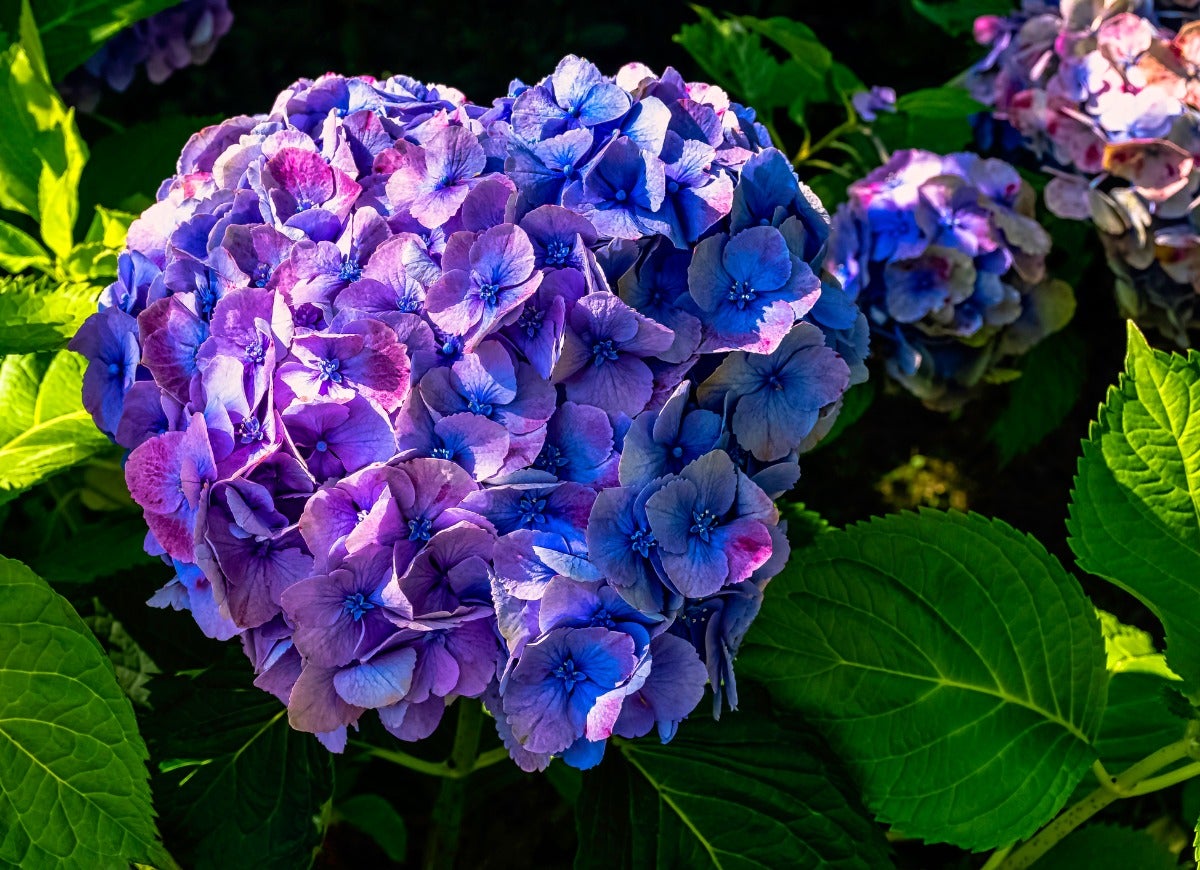
Mophead is another name for the bigleaf hydrangea (H. macrophylla). Perhaps the most common and noticeable of hydrangeas, mopheads sport broad leaves, heavy blossoms, and vibrant colors. This type of hydrangea goes by plenty of other names as well, including French hydrangea and pom-pom hydrangea. Depending on the pH of the soil, the buds can range from deep blue to pink and anywhere in between.
This shrub’s showiness begins with the nearly cabbage-size flowers on some varieties that vary in color (like Everlasting Amethyst), plus large leaves to back them up. ‘Big Daddy,’ from Southern Living, grows 12-inch flowers that range from pink to blue, depending on how much acid is in the soil. They’ll bloom true blue in most Georgia soils, but growers in other states might need to drench the soil with aluminum sulfate during the blooming season to turn this big daddy blue. Available at
Nature Hills Nursery
for $69.99.
PeeGee Hydrangea
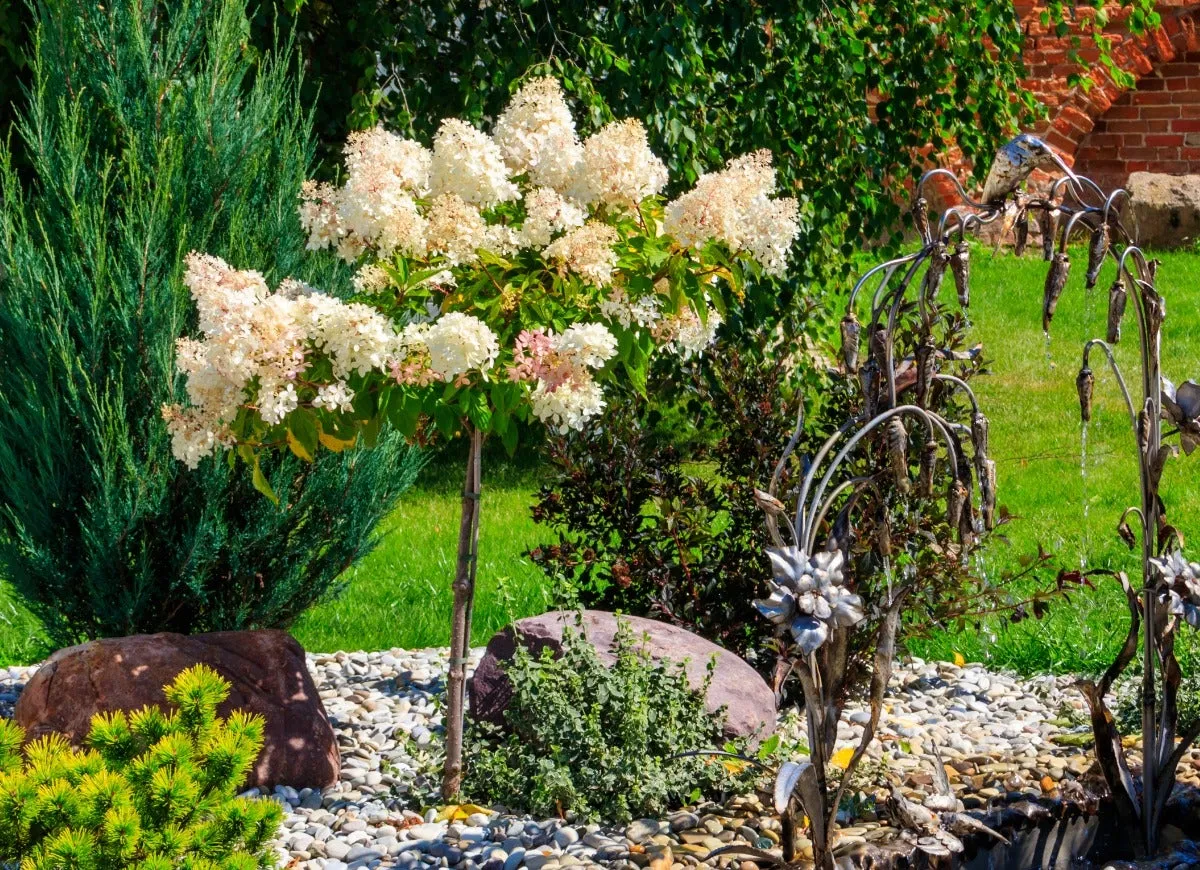
A variation of the panicle hydrangea, peegee is a shortened name for H. paniculata ‘Grandiflora’, the only type of hydrangea shrub that can be pruned into tree form, if preferred. Ideal for sunny areas, this shrub has conical blooms that add appeal to any outdoor space. Let them grow naturally or prune to shape from year to year.
Peegee can benefit from the application of a granular, slow-release fertilizer at planting time and every spring. The blooms appear on new wood, so prune peegee during any season but summer. Available at
TN Nursery
for $29.99.
Oakleaf Hydrangea
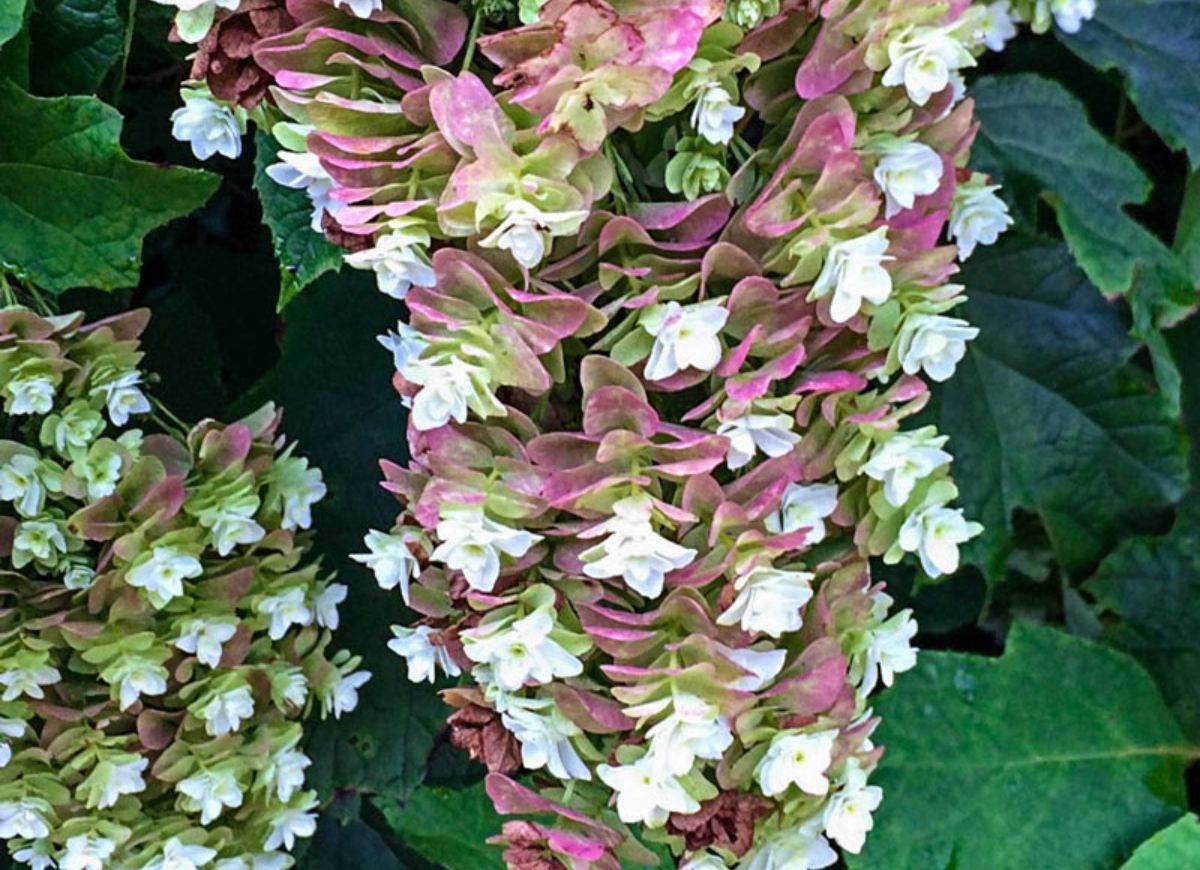
With its pointed petals and lobed leaves, the oakleaf hydrangea (H. quercifolia) is sure to inject interest into your garden. This species of hydrangea, which encompasses dozens of cultivars, typically grows in the Southeast United States. It tolerates shady environments well and adds height and bloom to any landscape scheme. In the fall, the foliage takes on colorful hues, just like the species’ namesake tree.
Oakleaf hydrangea does not need regular pruning, but to reshape or control its size, prune the shrub after the flowers fade in summer since it blooms on old wood. For exceptional drama, consider ‘Snowcicle,’ which features cascading white blooms that age to pink and then light green, at times showing all three shades at once, framed by green foliage that changes to red and orange in fall. Available at
Spring Hill Nursery
for $39.99.
Smooth Hydrangea
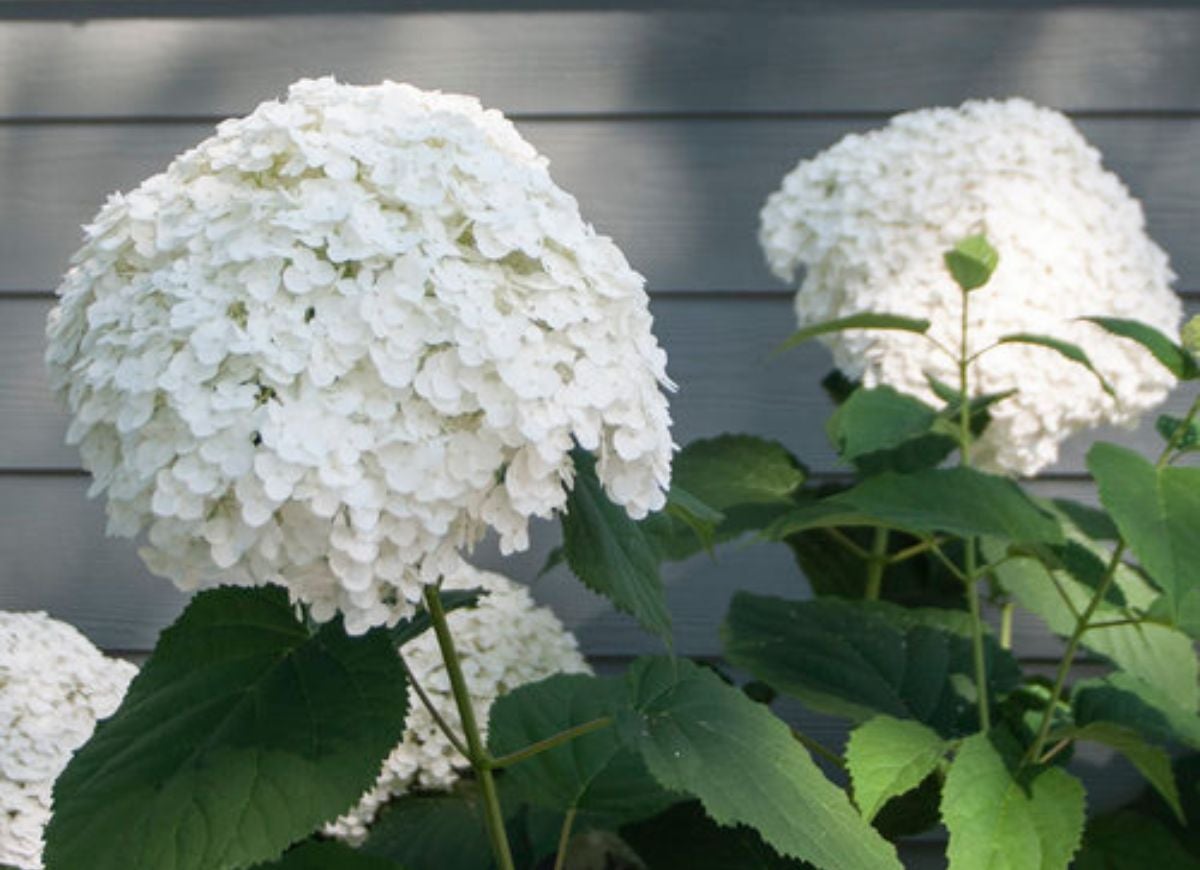
Perfect for partial- or full-shade areas of the yard, these hydrangeas with cloud-like clusters of white or pink buds bloom readily in early summer and grow in lushness and volume each year they return. Most commonly seen in the Northeast United States, smooth hydrangeas (H. arborescens) grow well in a number of climates and regions, and they’re a bold presence in any yard. The blooms of Incrediball smooth hydrangea resemble giant snowballs (nearly the size of basketballs) in summer, with flowers that fade to jade green. This reliable hydrangea grows in zones 3 through 8 and makes a one-of-a-kind cut or dried flower—just be sure to use a large vase! Available at
Nature Hills Nursery
for $88.99.
Lacecap Hydrangea
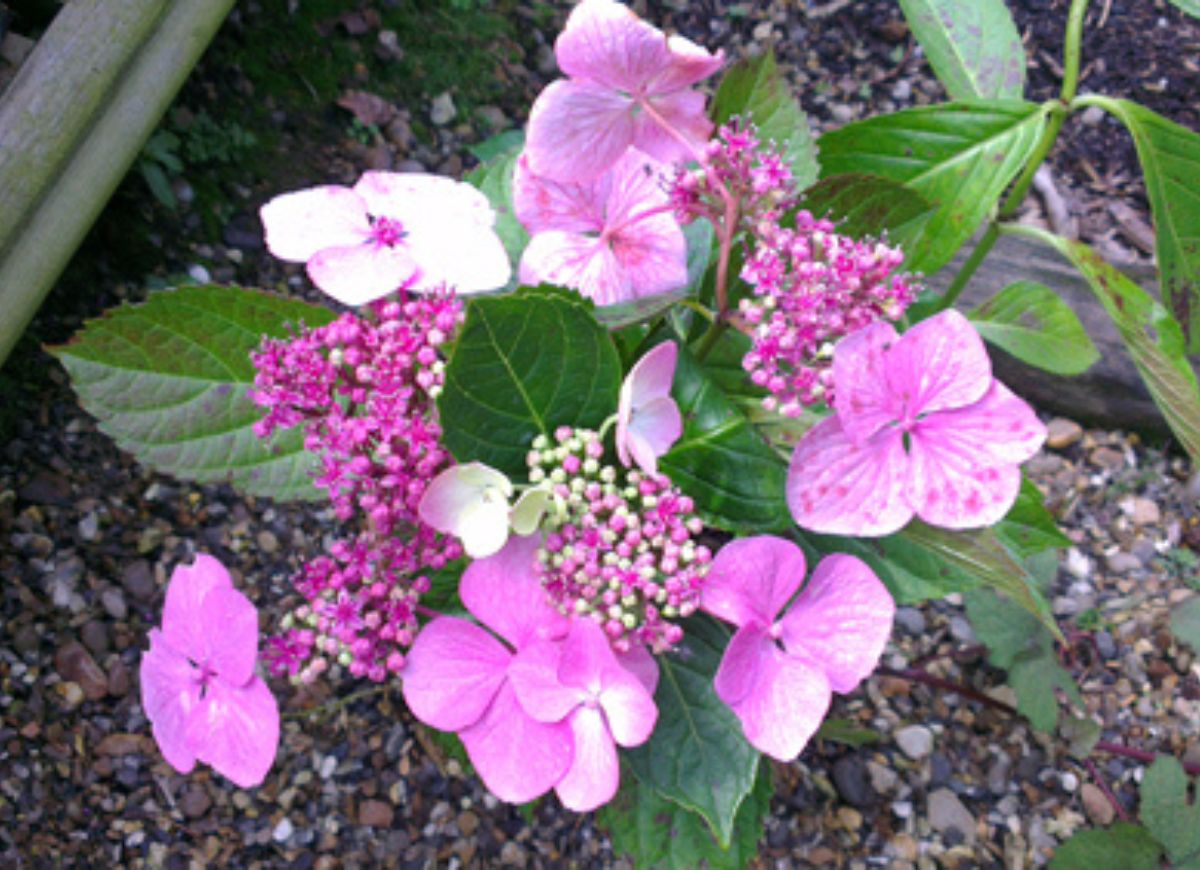
Intriguing and unusual, offering a varied and deep appearance, the lacecap hydrangea can be found in a range of colors. The name refers to the plant’s flattened cluster of tiny blooms surrounded by larger and showier petals. A form of bigleaf hydrangea, the lacecap requires similar growing conditions, preferring part sun and part shade, well-draining soil, and plenty of consistent watering.
Try Blue Wave lacecap hydrangea in zones 5a to 9b, and be sure to give this vigorous performer morning sun and afternoon shade. Available at
Wilson Bros Gardens
for $74.97.
Climbing Hydrangea
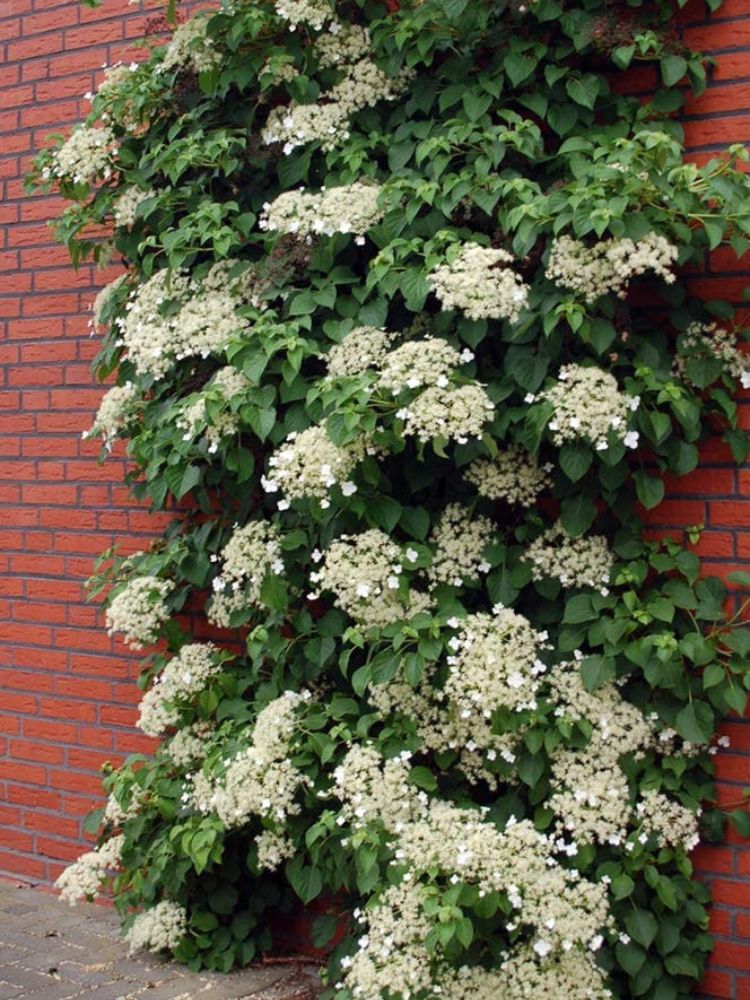
Even with limited garden space, you can still enjoy the beauty and profusion of a flowering hydrangea by planting a climbing variety to grace a brick exterior or trellis. Perfect for relatively shady areas and able to grow on a trellis, arbor, or wall, the climbing hydrangea(H. anomala ssp. petiolaris) offers all those beloved floral clusters with the added appeal of trailing ivy! Climbing hydrangeas have fragrant lacecap blooms that appear in June in most regions.
Climbing hydrangeas can spread high and wide, but prune to shape or direct the plant’s growth only after the blooms fade. Available on
Amazon for $9.99.
Florist Hydrangea
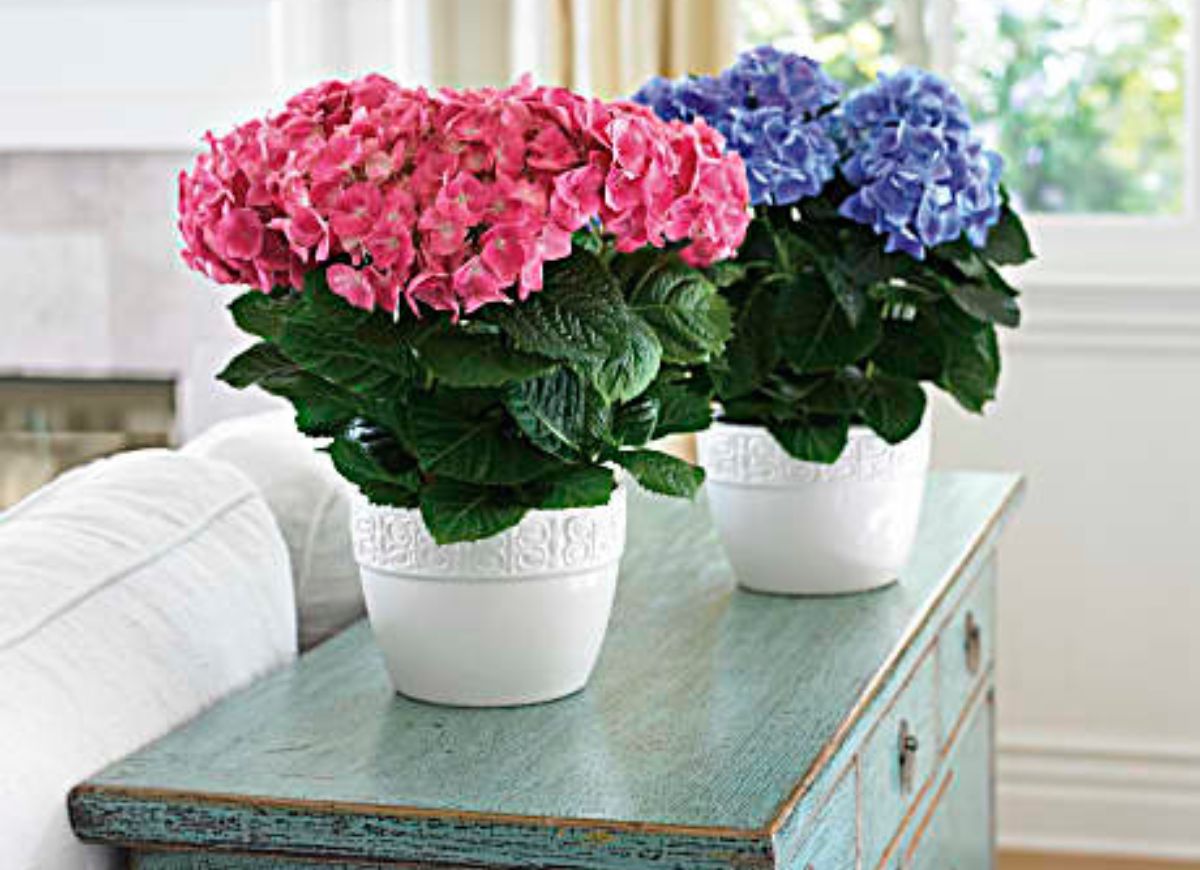
Gift hydrangeas, also called florist hydrangeas or indoor hydrangeas, are bigleaf varieties grown in greenhouse conditions. Although they are not hardy enough for outdoor planting, florist hydrangeas boast some of the most vivid colors. Ranging from deep purple to blush pink, these buds are babied for a reason. Their domesticated roots and indoor growing environment allow for optimal pH control, lending them incredible color and quality, and yielding plants that florists sell as cut flowers or in foil-covered pots.
You’ll probably want to treat a gift hydrangea as a houseplant, but give it lots of outdoor time in the shade (mixed with some morning sun). Just make sure to bring them indoors before frost hits your area. The smaller size (18 inches to nearly 3 feet) of most florist hydrangeas works well for growing in containers, and they’re a colorful treat to enjoy indoors. Available at
Teleflora
for $66.49.
Annabelle Hydrangea
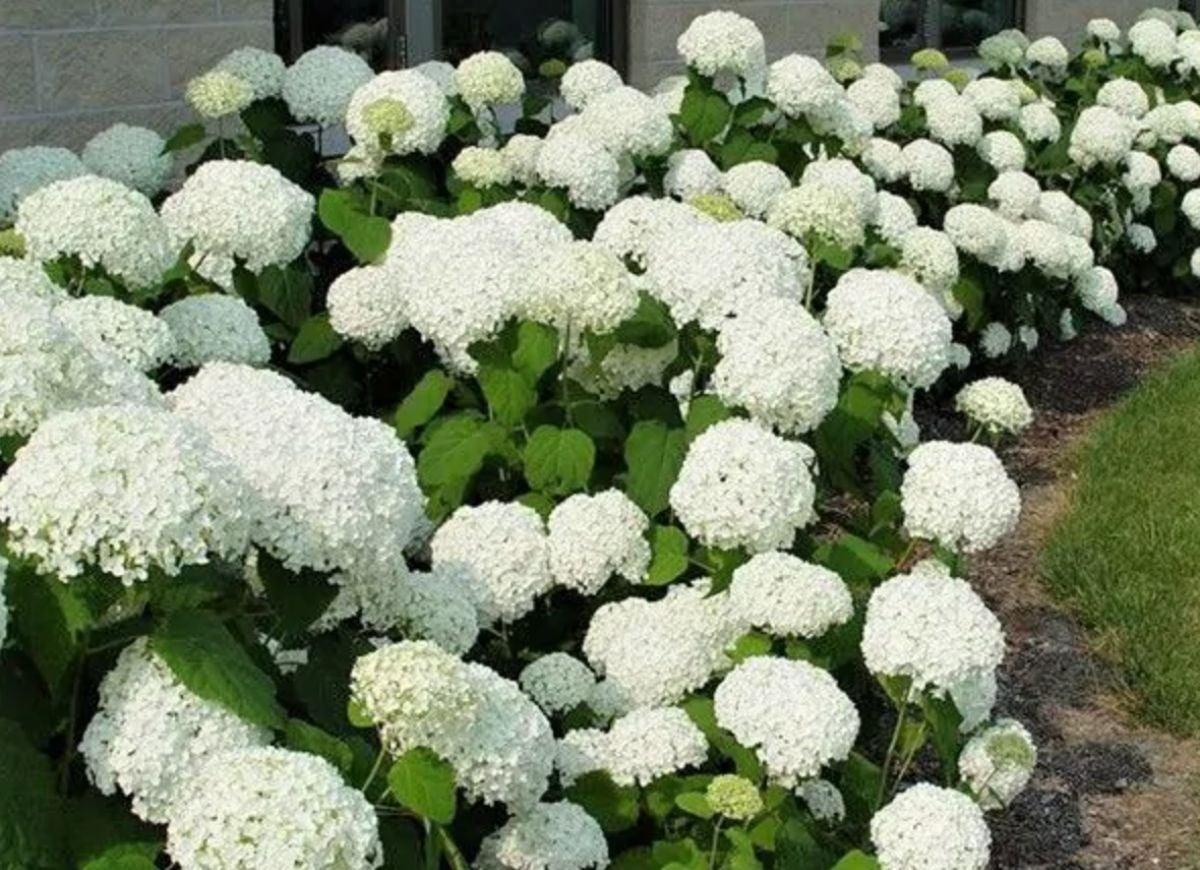
The ‘Annabelle’ hydrangea that’s so typical of the landscape of the Eastern United States usually has white flowers with small petals and lots of blossoms per stem. This smooth hydrangea cultivar radiates old-world country charm and has the staying power to grace your garden for years to come. To keep ‘Annabelle’ happy, keep the water coming!
‘Annabelle’ flowers on the current year’s wood, so prune the entire shrub down to about 6 inches to a foot above the ground in late winter every other year. The blooms can handle some late-season frost. Available at Amazon for $44.95.
Mountain Hydrangea
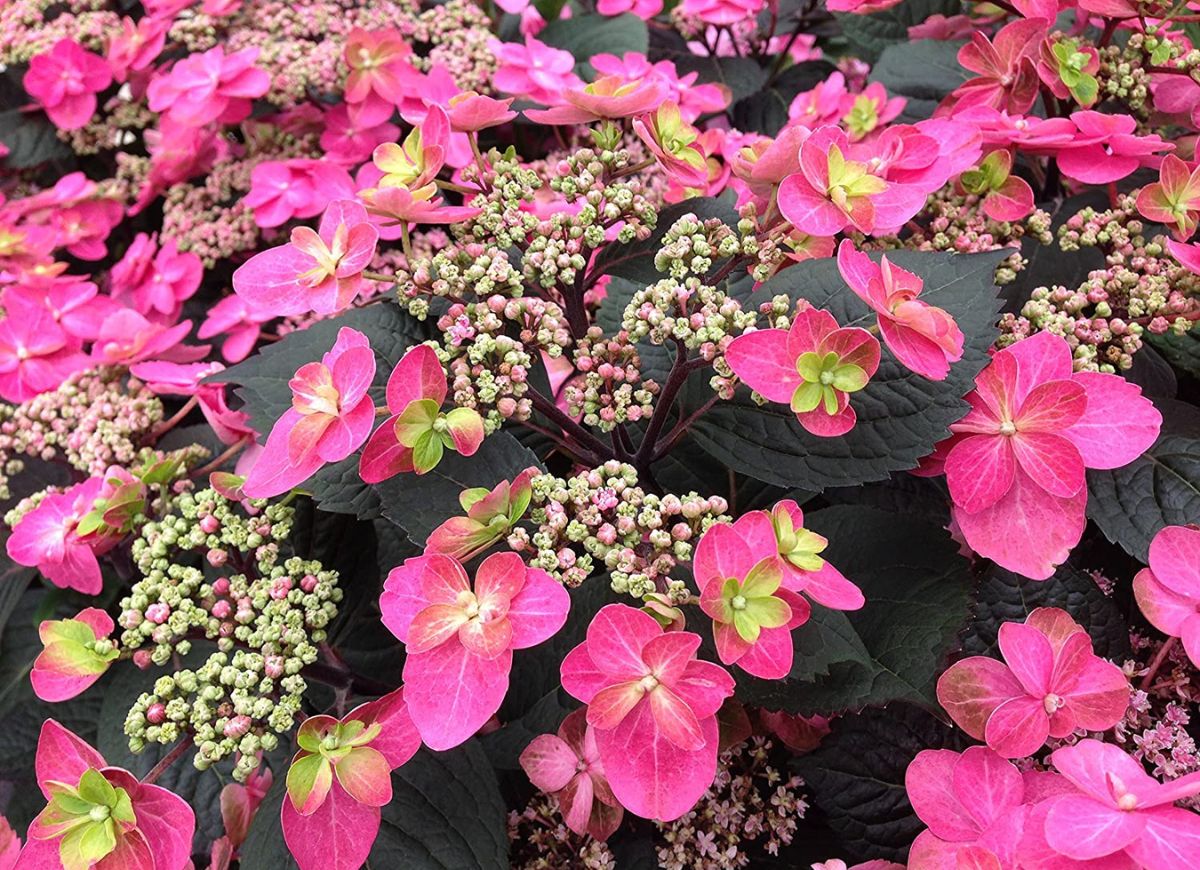
The last of the six types, mountain hydrangea (H. serrata) is more compact than the more common H. macrophylla, but don’t be fooled: It is a hardy little shrub. Like the lacecap, the mountain hydrangea features clusters of tiny flowers surrounded by larger florets that appear on old wood.
These hydrangeas can also change color depending on a soil’s acidity, so try a hydrangea fertilizer to boost color performance. The plant’s smaller leaves are susceptible to powdery mildew and other diseases, but it is an excellent choice for cool conditions and light shade or stippled shade from trees. Prune after flowering as needed to keep the plant open and healthy. One variety worth trying is Tuff Stuff, a reblooming mountain hydrangea that grows in zones 5 through 9. Available on
Amazon
for $28.24.
Little Quick Fire Hydrangea
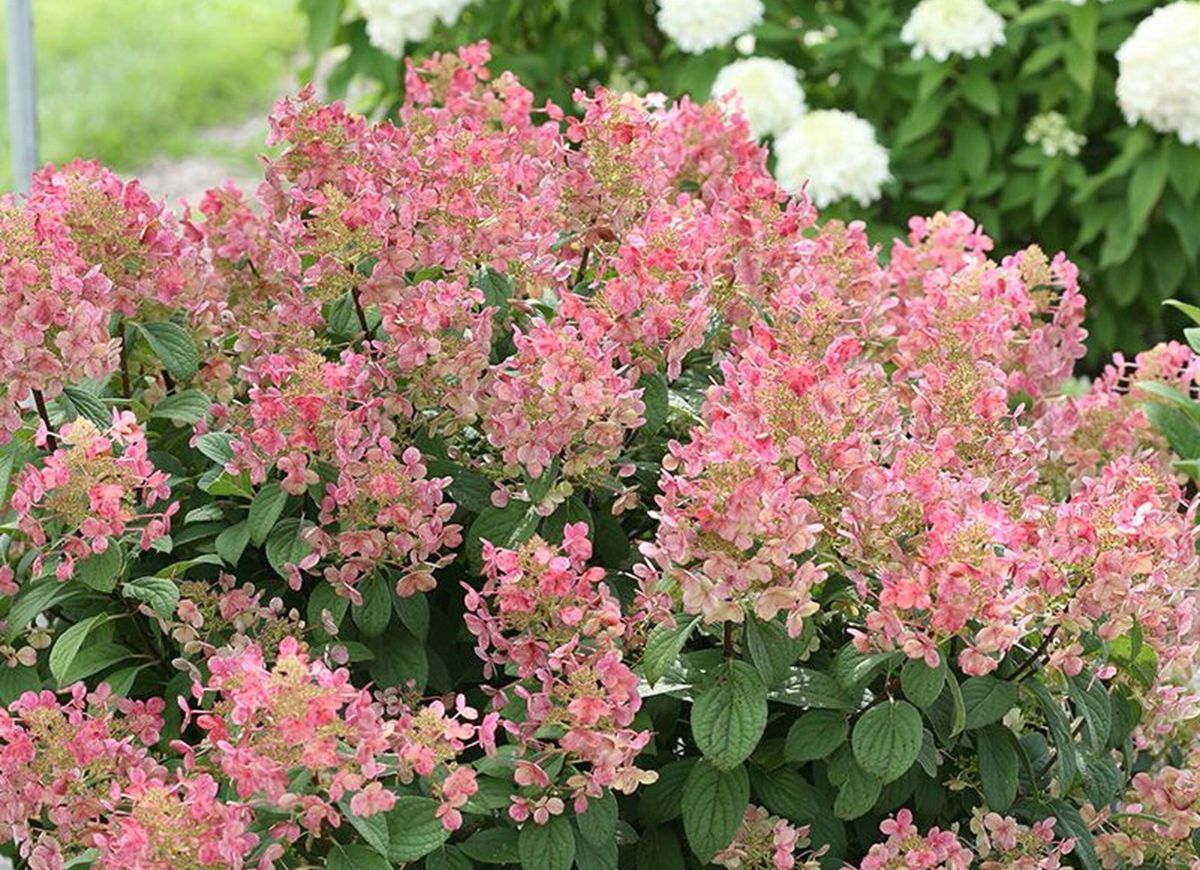
A panicle hydrangea, Little Quick Fire was named the 2022 Hydrangea of the Year by Spring Meadow Nursery in their annual program that honors Proven Winners plants. This little powerhouse is packed with great features, including a compact size, and it’s among the earliest of the panicles to bloom and change color. It’s hardy down to the cold of Zone 3 and the heat of Zone 8, and it produces flowers that progress from white to pink to nearly red as summer heats up.
Little Quick Fire thrives in full to part sun, and its blooms appear on new wood. The plant can take a pruning in late winter or early spring; just avoid cutting off more than one-third of a branch while trimming. This petite panicle hydrangea works well in containers, but it’s also a fantastic “frontman” far forward in the garden bed, either alone or in a group. Available at
Plant Addicts
, priced from $30.99.
Prices in this article are current as of June 17, 2022.

All You Need to Care for Your Lawn & Garden
Keeping your grass green and your plants thriving doesn’t just take a green thumb—it starts with the right tools and supplies.